
Back in April, RP Data released some fantastic research showing the increasing reliance of Australia’s state and local governments on property taxes.
Two charts from this research stood out. First, the below chart shows how aggregate property taxes rose from around $19 billion in 2000-01 to nearly $32 billion in 2009-10.
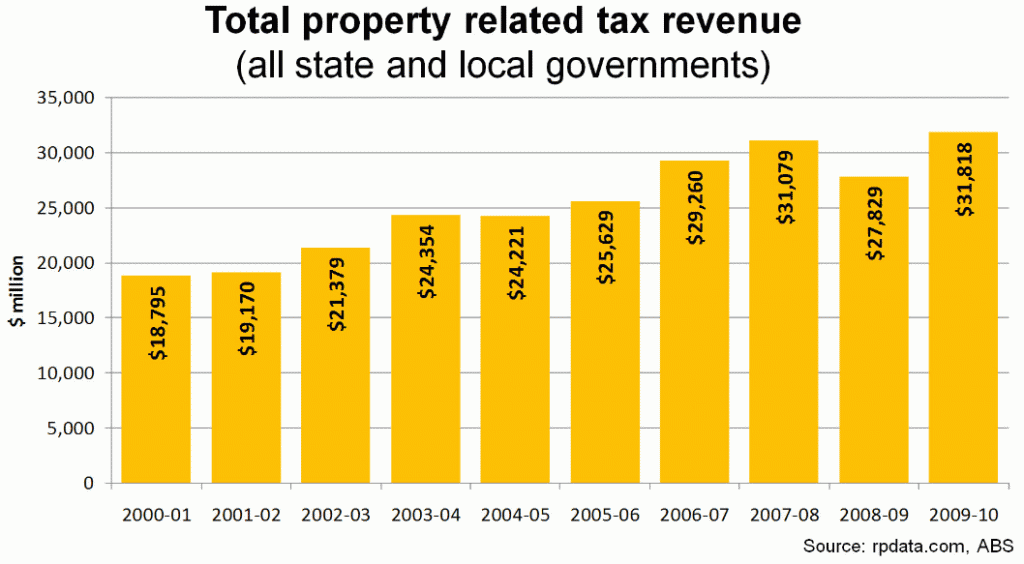
And the below chart shows how around 40% of this tax take has come from stamp duties:
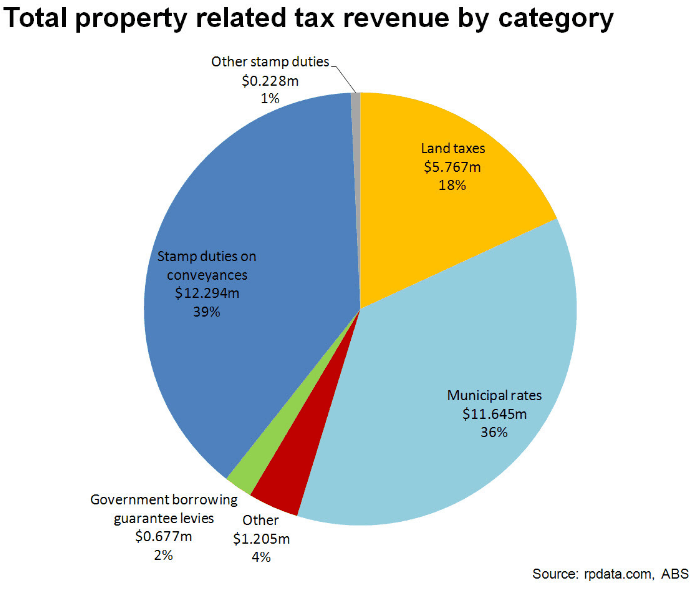
The state with the largest stamp duty burden is Victoria, which charges nearly $21,000 of stamp duty and other transaction-related charges on a median priced Melbourne dwelling – 4.5% of the purchase price:
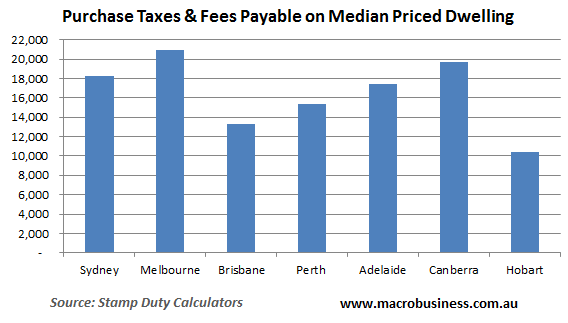
Purchase taxes and fees on a median priced Melbourne dwelling currently consume just over 30% of one year’s median household disposable income (calculated from the most recent ABS Household Income Survey and extrapolated by wages growth):
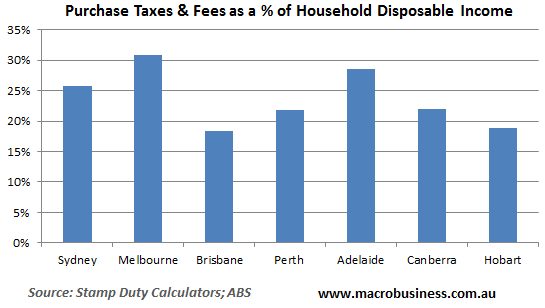
This means that an ordinary Melbourne family is currently required to sacrifice around 16 weeks of pay for the privilege of purchasing a typical home:
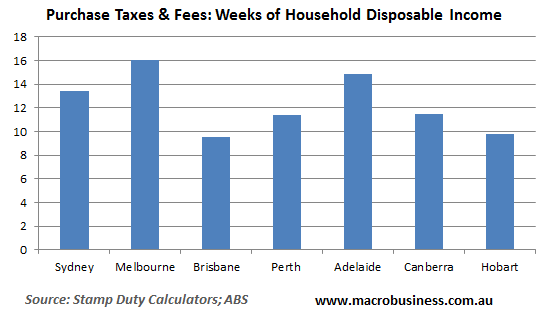
But the stamp duty situation in Victoria – so long the goose that laid the golden egg for the state government – is changing. First, Melbourne dwelling prices are falling, down 4.3% over the past 12 months:
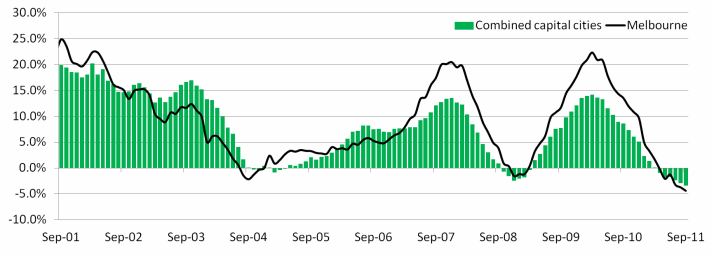
Second, transactions volumes are well below the average level recorded over the past decade:
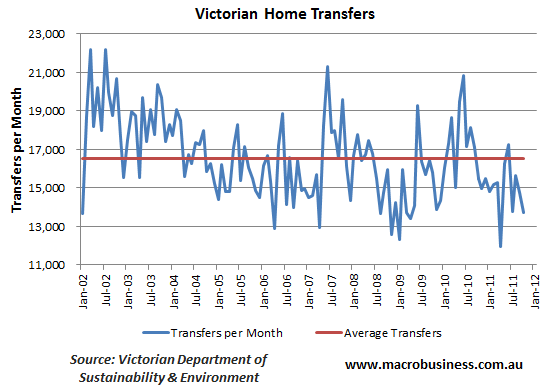
Falling dwelling prices combined with sluggish transactions volumes equates to significantly lower stamp duty receipts for the state government. Further, it appears that the number of property transfers and house price growth are highly correlated, with prices appearing to lead transactions volumes:
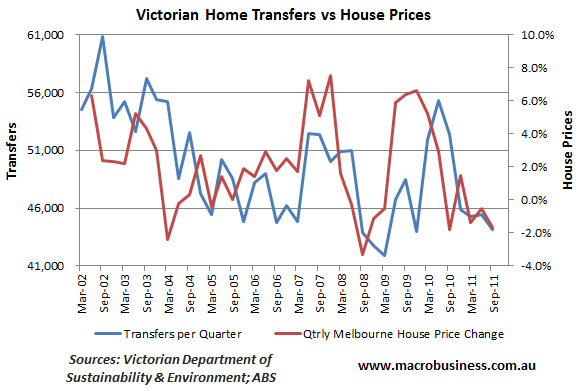
If this relationship between house prices and dwelling transfers continues, Victorian transaction volumes are headed lower still, which should put further pressure on stamp duty receipts.
The gravity of the situation was acknowledged by the Victorian Government last month when, in desperation, it introduced into parliament legislation that would reduce the deadline for paying stamp duty on property purchases from 90 to 30 days after settlement. The move is intended to bring forward around $100m of tax receipts into the current financial year and, in the process, assist the Government in maintaining a budget surplus.
An added concern for the Victorian Government is that the number of mortgages lodged has recently fallen behind the number of mortgages discharged:
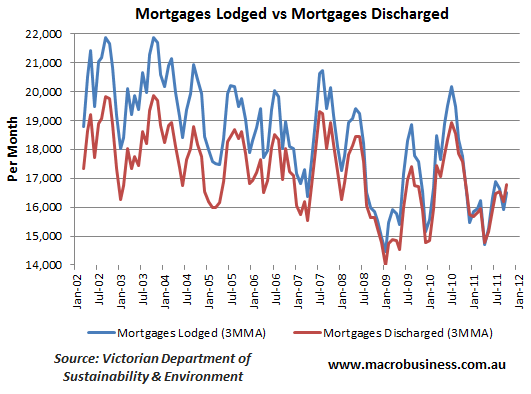
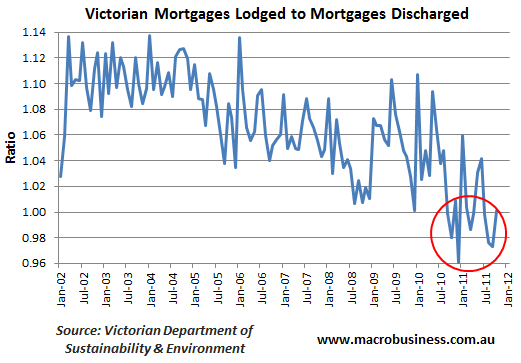
On its own, this indicator suggests that Victorians are becoming increasingly averse to debt, which could place continued pressure on home prices and transaction volumes, and ultimately lead to sharp falls in home construction – a key pillar of employment for the Victorian economy.
The financial landscape for the Victorian State Government is set to worsen.
unconventionaleconomist@hotmail.com
Hat tip aushousingcrash for pointing me to the Department of Sustainability & Environment data.

